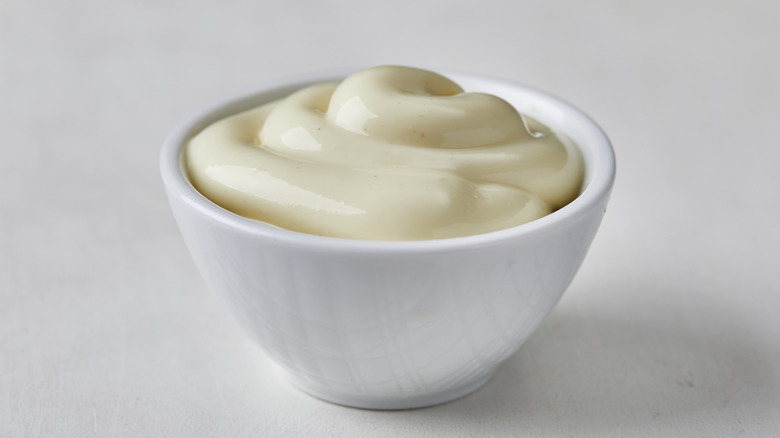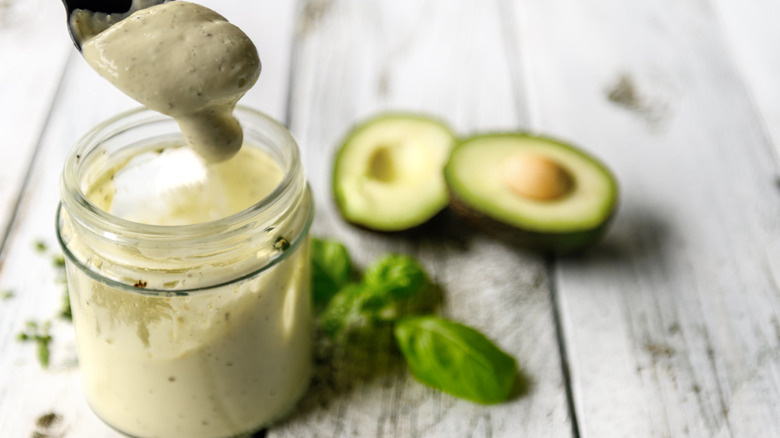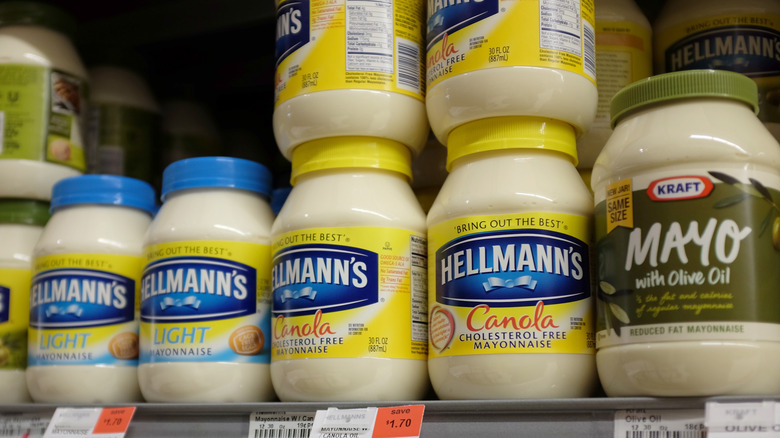When To Use Homemade Vs Store-Bought Mayonnaise
Mayonnaise is undoubtedly one of the most versatile condiments in existence. As a simple staple ingredient in most home and commercial kitchens, it would be easy to assume that all mayo is created equal. However, there are key differences between homemade and store-bought mayonnaise that can significantly change the outcome of some of your favorite dishes. To find out what makes these styles of the condiment so distinctive — and when exactly to use each — Food Republic spoke to Nelson Serrano-Bahri, chef and director of innovation at the American Egg Board.
"Regarding flavor, homemade mayonnaises have a fresher, eggier, and slightly tangier taste," Serrano-Bahri said. "Store-bought mayonnaise is more neutral, slightly sweeter, and can have a processed aftertaste due to preservatives." According to Serrano-Bahri, other common additives like stabilizers and emulsifiers can also impact the texture of store-bought mayonnaise. Shelf-stable mayo from the store is often thicker than its additive-free counterpart, which means the texture of homemade mayo is "lighter, silkier, and [it] has a more delicate consistency," Serrano-Bahri noted.
When is it best to use homemade mayonnaise?
Tangy and acid-forward, fresh homemade mayonnaise is a delightful addition to any recipe it's used in, but especially "dishes where its fresh, creamy texture and bright flavor can shine," according to chef Nelson Serrano-Bahri. Use scratch-made mayo as a rich dressing for beloved sides like Amish potato salad or a beef fillet with basil mayonnaise. This lighter mayo is also ideal for boosting the flavorful filling for classic deviled egg, and adding an extra oomph to aioli-based spreads for burgers and sandwiches.
When it comes to making your mayo, Serrano-Bahri highly recommends using pasteurized eggs (which are the safest to consume when raw) and good-quality oil that is new or just opened and has yet to begin oxidizing. Since texture is everything with homemade mayo, Serrano-Bahri also suggests whipping your ingredients together in a mason jar with an immersion blender in order to ensure a well-emulsified end result. If you aren't using the condiment immediately, or happen to have some fresh mayo left over, "I recommend storing it in an airtight container in the fridge and using it within four days since it lacks preservatives," Serrano-Bahri added.
When is it best to use store-bought mayonnaise?
While making your own mayo at home carries a host of benefits, there are also numerous instances when the convenience and consistency of pre-packaged mayonnaise are unbeatable. "Store-bought mayonnaise can also be great for several dishes," said Nelson Serrano-Bahri, "including recipes that require stability, like baked casseroles or dressings with a longer shelf life." He also suggests skipping the hassle of making the condiment from scratch when preparing dishes where mayonnaise is simply used as a binding agent, as is the case with most tuna salad or chicken salad recipes.
However, shopping for the right brand of mayo can make all the difference, no matter how you plan on using it. When at the grocery store, "you always want to see eggs listed as the first ingredient, [and] a high-quality oil like sunflower, avocado, or olive oil instead of soybean or canola," Serrano-Bahri explained. He also suggests looking for brands that use minimal additives and chemical preservatives — instead, look for vinegar or real lemon juice, which will give a better flavor.



